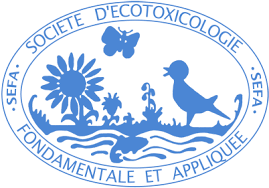The Energy-Climate Act adopted in 2019 sets ambitious targets for France's climate and energy policy. The law sets a target of carbon neutrality by 2050, in response to the climate emergency and the Paris Agreement, one of whose four pillars is the gradual phase-out of fossil fuels and the development of renewable energies. Low-carbon technologies are more material-intensive than traditional technologies, and energy efficiency linked to the development of renewable energies is also accompanied by increased consumption of mineral resources, including so-called critical metals (CM) or strategic metals for geological or economic reasons. Whether for electrified vehicles (cobalt, lanthanum, lithium), catalytic converters or fuel cells (platinum, palladium, rhodium), wind power (neodymium, dysprosium, terbium, etc.), civil aeronautics (neodymium, dysprosium, terbium, etc.) or energy efficiency (cobalt, lanthanum, lithium), civil aeronautics (titanium consumer) or solar photovoltaics (cadmium, indium, gallium consumer), all the innovations developed to achieve the energy transition depend on the availability of certain ores and refined metals, such as rare earths (REE) and lithium (Li).
REEs are a group of 17 elements (scandium, yttrium and 15 lanthanides), which have become essential for many cutting-edge industries in the military and medical fields, as well as for low-carbon technologies (wind turbine magnets). In line with the expected increase in installed capacity, the results show an almost 2.5-fold increase in total rare earth consumption in a 4° C scenario, and a more than 10-fold increase in a 2° C scenario by 2050 (Hache et al 2021b, IFPEN 2020).
As for lithium, in addition to being very light, it has a very low electronegativity, making it the material of choice for batteries that enable reversible energy storage. With the development of Li-ion technologies, it has found a strong outlet in this sector, whether for portable electronics (notably cell phones and laptops) or, more recently, for electric vehicles. Global Li production has increased 3-fold in the space of a decade, from 25,000 t in 2010 to over 82,000 t in 2020. In recent years, demand for Li has grown at a steady rate of around 20% a year. Demand for Li is set to increase by a factor of 5 to 7 over the next decade, with demand estimated at over 680 kt in a zero-emission scenario.
The growing demand for these two MC has already led to an increase in their extraction, inevitably leading to an accentuation of their discharge and the resulting pressures, which obliges/allows these metals to be considered as emerging contaminants. Despite industrial practices and processes that
seek to be more respectful of the environment, and the promotion of more responsible development of mineral resources (Plante et al., 2023), the environmental footprint of mining is not negligible.
In an environmental context of expansion of the use of REE and lithium and increasing releases, the project proposes to evaluate their fate and environmental impacts on two species of invertebrates emblematic of aquatic environments. The interdisciplinary project associated with the PhD proposal will focus on the land-sea continuum, bringing together researchers from the fields of environmental geochemistry, ecotoxicology, molecular biology and modeling. The aim is to characterize and study the relationships between the exposome, metallome, metabolome and reactome in two bivalves: one freshwater (Dreissena polymorpha) and one marine (Mytilus galloprovincialis), and to anticipate environmental risks. This type of project, which is highly integrated in disciplinary and spatial terms, does not exist or exists only to a limited extent for other, more conventional metals, and is therefore completely innovative for REE and Li, for which no environmental standards have yet been established. The main challenge is to describe, characterize and formalize the links between exposure to contaminants (physico-chemical characterization of environments, geochemistry, speciation, bioavailability, bioaccumulation, organotropism, cellular distribution) and the biological responses observed in organisms. Laboratory experiments will provide answers to the following questions:
1. What is the fate and bioavailability of Gd-AC and Li in fresh and marine waters?
2. What is their transfer, bioaccumulation and distribution in biota?
3. What are the molecular and cellular mechanisms and effects induced in exposed organisms?
4. How can we predict the exposure of aquatic organisms to Gd-AC and Li, and the transfer levels at risk for bivalves, by developing mathematical and statistical approaches?
Field experiments will provide answers to the following questions:
1. What is the potential risk associated with the transfer of Li from various mineralisations to biota and its potential biomagnification?
2. What is the anthropogenic impact of Li in areas of exploitation and industrial use?
Résumé
Description détaillée
Type d'offre
